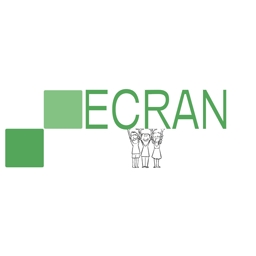Introduction to clinical trials: lay-friendly video
This lay-friendly video introduction to clinical trials was created by the European Communication on Research Awareness Needs Project.
Key Concepts addressed:- 2-2 Comparison groups should be similar
- 2-5 People should not know which treatment they get
- 2-1 Comparisons are needed to identify treatment effects
- 3-6 Do the advantages outweigh the disadvantages?
- 3-1 Do the outcomes measured matter to you?
- 2-8 Consider all of the relevant fair comparisons
- 2-12 Single studies can be misleading
Details
This 5-minute lay-friendly video was created by the European Communication on Research Awareness Needs (ECRAN) Project. The animation is available in 23 languages and is aimed at a lay audience, or those with little knowledge about clinical trials. The ECRAN group have also produced a great powerpoint presentation explaining clinical trial for patients(15-minutes).
Enjoy the film and discover how Clinical Trials work today.
Clinical Research from ECRAN project on Vimeo.
About the video

Trial participants should be similar to those in which the treatment will be used in real life.
The ECRAN video explains the following key aspects of clinical trials:
- The clinical trial protocol must be approved by an ethics committee, with independent experts and patients’ representatives
- Participants should be divided into similar groups which receive the treatments and control or placebo respectively
- Random allocation of participants to these groups
- Participants, carers and researchers should be blinded to treatment allocation
- Results should be replicated in other independent trials
- The benefits and risks of new treatments should be evaluated together

Trials should look at outcomes that matter to patients
Common pitfalls:
- Placebos should not be used where there are effective treatments available
- Trials should include patients like those in whom the treatment would be used in real life
- Treatments should improve outcomes that are important to patients
- New treatments should be better than the current treatment, not just a placebo
Languages
The video is available in the following languages:
| bg – български Fullscreen: Vimeo Download: mp4 |
en – English Fullscreen: Vimeo Download: mp4 |
lv – latviešu Fullscreen: Vimeo Download: mp4 |
ro – română Fullscreen: Vimeo Download: mp4 |
| cs – čeština Fullscreen: Vimeo Download: mp4 |
es – español Fullscreen: Vimeo Download: mp4 |
hu – magyar Fullscreen: Vimeo Download: mp4 |
sk – slovenčina Fullscreen: Vimeo Download: mp4 |
| da – dansk Fullscreen: Vimeo Download: mp4 |
fr – français Fullscreen: Vimeo Download: mp4 |
mt – Malti Fullscreen: Vimeo Download: mp4 |
sl – slovenščina Fullscreen: Vimeo Download: mp4 |
| de – Deutsch Fullscreen: Vimeo Download: mp4 |
ga – Gaeilge Fullscreen: Vimeo Download: mp4 |
nl – Nederlands Fullscreen: Vimeo Download: mp4 |
fi – suomi Fullscreen: Vimeo Download: mp4 |
| et – eesti Fullscreen: Vimeo Download: mp4 |
it – italiano Fullscreen: Vimeo Download: mp4 |
pl – polski Fullscreen: Vimeo Download: mp4 |
sv – svenska Fullscreen: Vimeo Download: mp4 |
| el – ελληνικά Fullscreen: Vimeo Download: mp4 |
lt – lietuvių Fullscreen: Vimeo Download: mp4 |
pt – português Fullscreen: Vimeo Download: mp4 |
Synopsis
Back in 1747, James Lind had never heard about clinical trials!
Lind was a Scottish naval surgeon, and he found himself on a Royal Navy ship full of sailors sick with scurvy. His ideas revolutionised our understanding of how to test which treatment might work best. His work not only saved lives on his ship, but laid the foundation for modern clinical trials (randomised controlled trials) as we know them today.
Every year since 2005, The European Clinical Research Infrastructures Network (ECRIN) has celebrated The International Clinical Trials’ Day (ICTD) at or around the 20th of May (www.ecrin.org) in order to commemorate the day James Lind started his famous trial (www.jameslindlibrary.org). ECRAN and ECRIN urge others to take up the habit of celebrating the ICTD.



